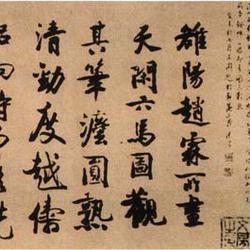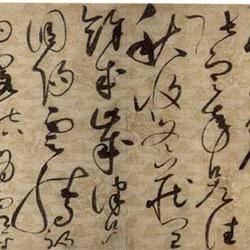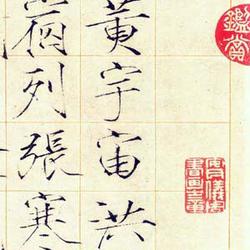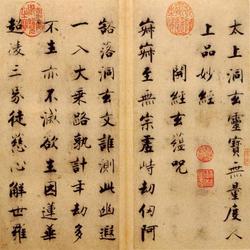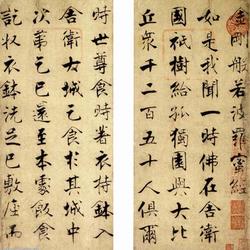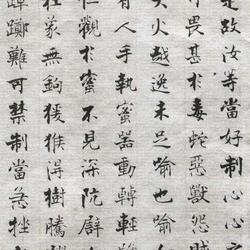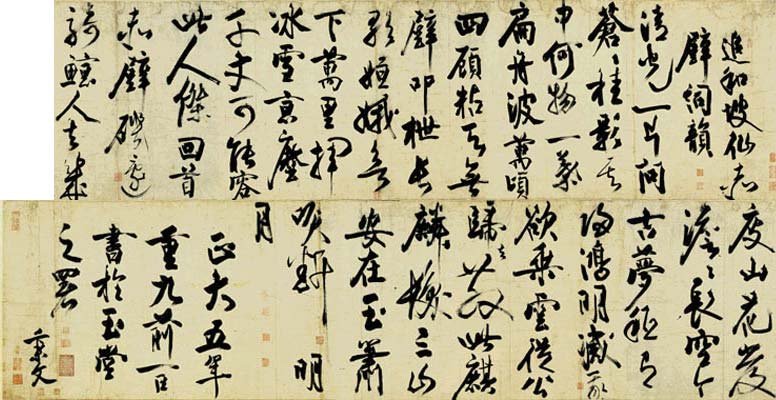
Zhao Bingwen's "Poetry on the Red Cliff Scroll" on paper, the original picture is 51.9 cm in height and 386 cm in width, collected by the National Palace Museum in Taipei.
The calligraphy in this volume is powerful, majestic, natural and vivid, and has extraordinary skill. It is a masterpiece of calligraphy in the Jin Dynasty.
Explanation:
The rhyme of the poems of Zhuihepoxian and Chibi. There is a clear light, and I ask the osmanthus shadows in the sky what is in it. A flat boat with thousands of waves is rolling, and the sky is sticky to all directions. Knocking and singing long songs, Chang'e is about to descend, waving the ice and snow thousands of miles away. The dust in Beijing is so vast that it is possible for such an outstanding person to be accommodated. Looking back at the edge of Chibiji, I saw people riding whales, and the mountains were blooming several times. The faint dream of modern and ancient times in the sky can only be extinguished by returning to Hongming. I want to ride on the clouds, return from my father-in-law, and scatter this unicorn hair. The three mountains are peaceful, and the jade flute blows off the bright moon. On the day before the ninth day of the fifth year of Zhengda, the letter was written at the Yutang Office. Bingwen.
[appendix]
The True Color of Toutuo Prajna Heart - Appreciation of Zhao Bingwen's "Poetry on the Red Cliff Scroll"
Author: Siemens
Zhao Bingwen's "Poetry on the Red Cliff Picture Scroll" ink on paper, the original picture is 51.9 cm in height and 697.7 cm in width. It is now in the collection of the National Palace Museum in Taipei. The calligraphy in this volume is powerful, majestic, natural and vivid, and has extraordinary skill. It is a masterpiece of calligraphy in the Jin Dynasty.
Zhao Bingwen (1159-1232), courtesy name Zhou Chen and nickname Xianxian Jushi, was a native of Fuyang, Jinci Prefecture (now Ci County, Hebei Province). In the twenty-fifth year of Emperor Shizong's reign (1185), he was promoted to Jinshi. In the first year of Emperor Xuanzong's reign (1217), he became the Minister of the Ministry of Rites and concurrently studied as a bachelor. He also studied national history and learned about the affairs of Jixian Academy. Aizong ascended the throne and was changed to a bachelor of Hanlin. Zhao Bingwen was studious by nature, skilled in poetry, calligraphy and painting, and was quite famous at that time. Liu Qi's "Gui Qian Zhi" of the Yuan Dynasty says: "Zhao Bingwen's poetry and calligraphy in his childhood were all written by Wang Tingyun. Later, he studied Taibai and Dongpo, and his calligraphy was combined with ancient and modern calligraphy. In his later years, his calligraphy made great progress. His poetry was based on the Tang Dynasty. Kui Ran was a leader of literati for a time, and he called himself Xianxian Jushiyun." Wang Tingyun, a famous calligrapher in the Jin Dynasty, was 8 years older than Zhao Bingwen and had a great influence on Zhao Bingwen's poems and books. Wang Tingyun, courtesy name Ziduan and nickname Huanghua, was born in 1151 in Xiongyue, Gaizhou, Dongjin, Liaoning Province (now Gai County, Liaoning Province). He was the nephew of the famous calligrapher Mi Fu.
Zhao Bingwen's extant ink ink "Zhui Hepoxian Chibi Ci Yun" is inscribed after Zhu Rui's "Red Cliff Picture Scroll". The calligraphy style is strong and sharp, and it has the charm of Mi Fu's running script "Wind Qiao Formation Horse, Calm and Happy" . When using the pen, the center stroke is the main one, and the side strokes are not avoided. The strokes focus on the reverse side, which is natural and decent, without showing traces. For example, in the work, the character "成" is long and horizontal, the character "箫" is long and horizontal, etc. However, there are also many strokes written by Shunfeng and even striking at both ends, which shows that the author's brushwork is versatile and unconventional. What is particularly worth pointing out is that the author often lifts the pen at the turning points of the strokes, and even raises the tip of the pen to the surface of the paper, forming the tendency of the pen breaking the meaning, such as "Hong", "Conong", "Gui", "This", " The words "An", "Ming", "Chong", "Shu" and so on. This gives Zhao Bingwen's running calligraphy a strong sense of rhythm. Take the word "this" as an example. The character is drawn from the left short vertical stroke, and the pen is lifted to break at the turning point. Then the horizontal stroke is written, and then the two short vertical strokes are connected with a string. There is a difference between the two short and vertical strokes. The first stroke is written along the front, with both ends coming out. The second stroke is straight and drawn out with a string. In this way, the two short vertical strokes are connected to the meaning of the front and back strokes respectively, but the relationship between them is reversed. are separate. Then the last stroke inherits the meaning of the previous stroke, and ends with a relaxed and cautious brushwork. The whole character appears to have twists and turns, with a lively rhythm, integrated and completed in one go. Another example is the word "山". In other people's writings, most of this cursive character is written in one stroke. However, Zhao Bingwen arranged two small pauses in this stroke, making the two transitions rhythmic and sharp. These places fully demonstrate the characteristics of Zhao's brushwork. As for the vertical hooks of the characters "明" and "月", and the horizontal hooks of the characters "Cloud" and "Hu", there are slightly exaggerated pauses and transitions. These brushwork techniques obviously come from Mi Fu and Wang Tingyun.
In terms of structure, this work has an open sky and a majestic atmosphere. It is obviously influenced by Huang Tingjian, especially the long and horizontal characters such as "Cheng", "An", "Chong" and "书", which are common strokes in Huangshu. Words like "san", "fa", "break", etc. are smooth, stretched and vivid, and have the charm of Huang Tingjian's cursive calligraphy hand, vertical and horizontal strokes.
From the Song Dynasty onwards, calligraphy was devoted to artistic conception, and the calligrapher's personality was fully expressed. Especially in running script, his achievements were even more outstanding. Su Shi's handsome appearance and charming appearance, Huang Tingjian's Yu Ba Qiu Jian and Mi Fu's calm and flying spirit all express extremely distinctive personality characteristics. Wang Tingyun inherited Mi Fu, and his writing style was versatile and varied. His calligraphy style was vigorous, vigorous, fast, and fluent. On the basis of Wang Tingyun, Zhao Bingwen also absorbed the elegance and unrestrainedness of Su Dongpo and the free and easy style of Huang Tingjian, taking the strengths of other schools of thought. , pottery casting and smelting, thus forming its own unique style.
This work was created in the fifth year of Emperor Aizong's reign in the Jin Dynasty (1228). Zhao Bingwen was 69 years old at that time. His calligraphy style had matured and he had entered the realm of "both people and calligraphy are old". However, this work is not a mere accumulation and showoff of skills. Rather, it has a distinctive personality and surging passion, filled with vigorous vitality, and can touch the heartstrings of readers with its simple sincerity and vivid pulse of life. Just from reading between the lines, we can see the author's high-level courage and skillful wisdom, which fully demonstrates the author's extraordinary skills. Therefore, Yuan Haowen commented that Zhao Bingwen was "like the original Toutuo, who has learned until he has no knowledge, and speaks horizontally and vertically, which is nothing more than prajna".
Zhao Bingwen's passionate and personalized calligraphy can be said to be the end of the Shangyi style of calligraphy in the Song Dynasty. By the Yuan and Ming Dynasties, this style of calligraphy gradually declined, and the river in (*) Dong became a trickle, while the mature and charming style of calligraphy The stylized calligraphy style gradually occupied the mainstream position in the calligraphy world.

